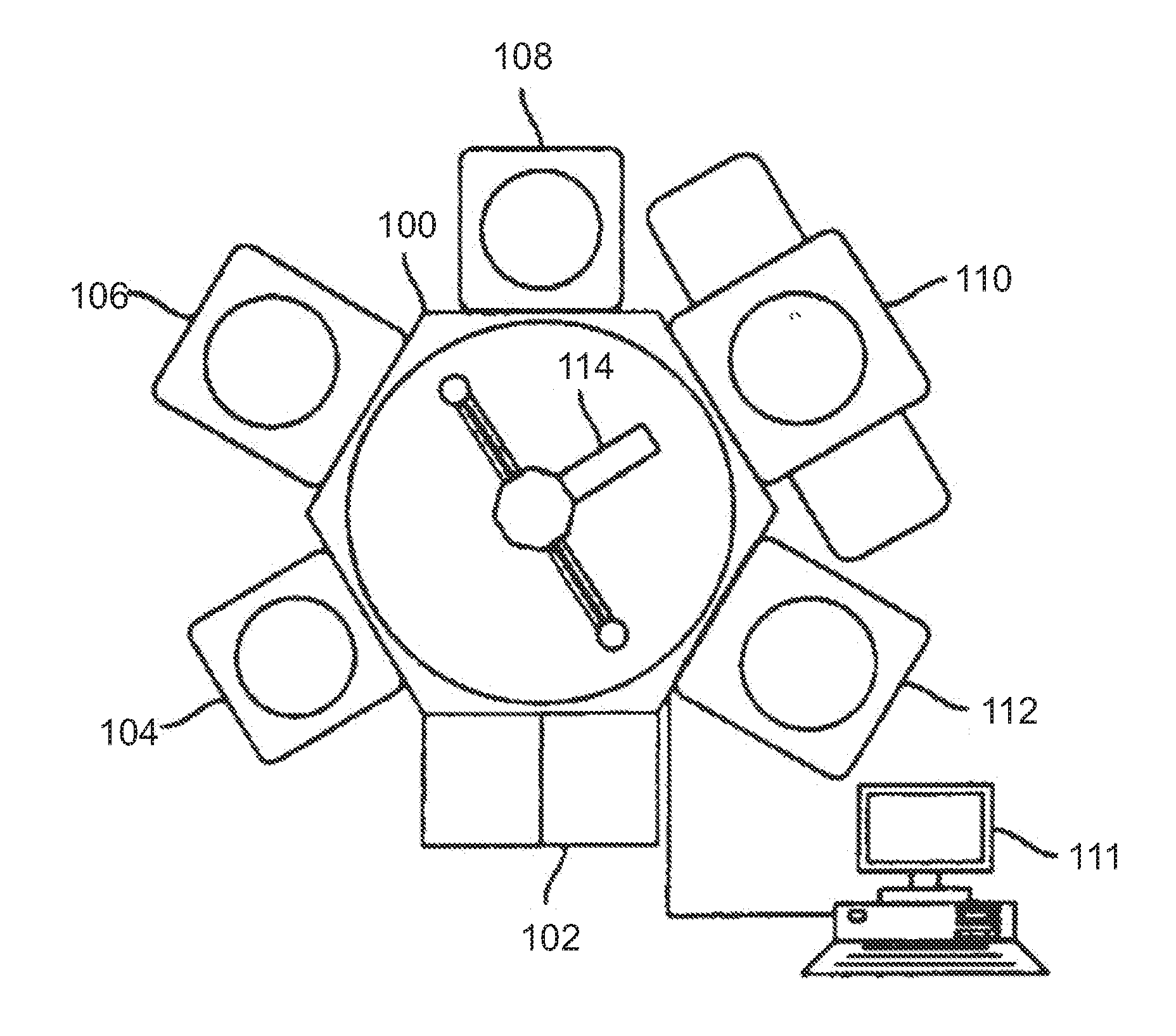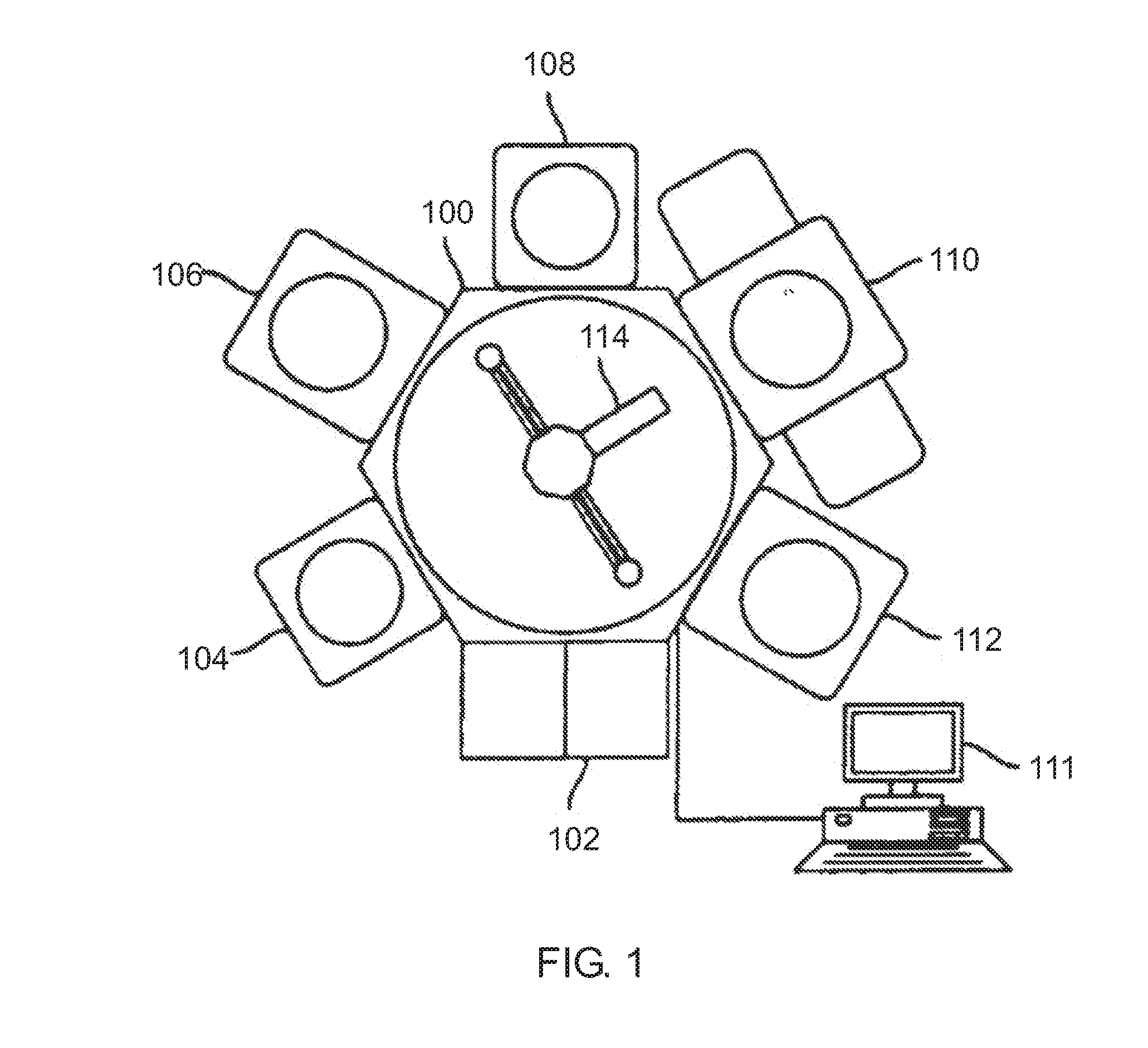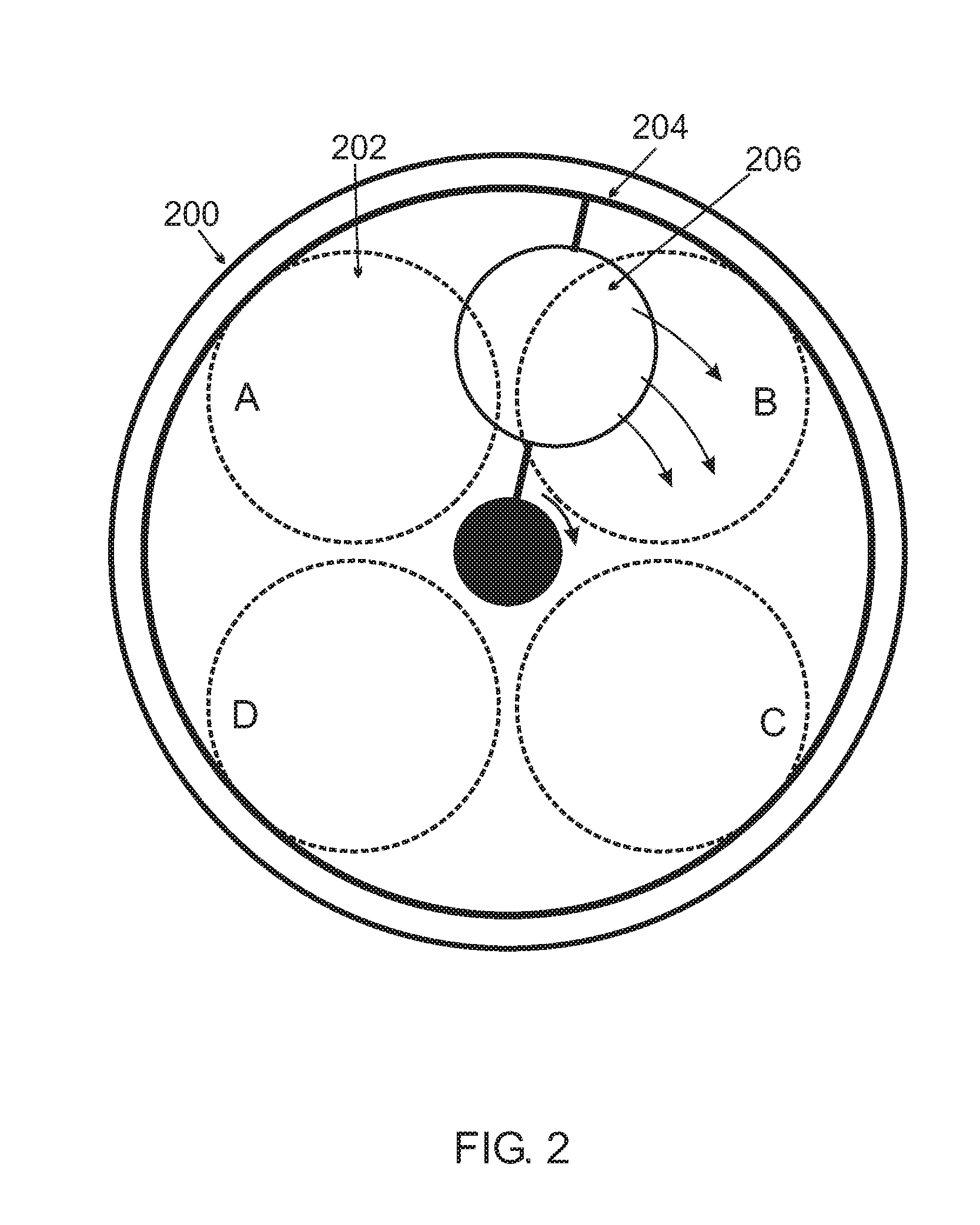Chemical Vapor Deposition System
a chemical vapor and vapor deposition technology, applied in chemical vapor deposition coating, coating, metallic material coating process, etc., can solve the problems of large and undesirable lattice strain in the gan layer, complex deposition of gan on si substrate, large etch pit in the si substrate, etc., to reduce stress and improve the effect of stress
- Summary
- Abstract
- Description
- Claims
- Application Information
AI Technical Summary
Benefits of technology
Problems solved by technology
Method used
Image
Examples
example 1
Preparation of AlN Layers
[0138]Si(111) wafers were prepared by a two-step cleaning process. The wafers were boiled in an aqueous solution of HCl and H2O2, rinsed and dried, then etched in 20% HF. AlN was grown on the Si wafers by first exposing the wafers to trimethylaluminum at a pressure of about 0.5 Torr and a wafer temperature of 700-900° C. About 0.5 ML of Al was formed on the surface which was then exposed to a N2 plasma at 500 W. The plasma power was sufficient to generate active neutral species of nitrogen having the lowest excited state of molecular nitrogen (A3Σu+). The exposure to excited species of N2 was sufficient to produce a layer of aluminum nitride on the surface of the substrate.
[0139]In this example, the wafer was continuously rotating between the chemical vapor deposition environment and the plasma environment to provide alternating exposures to the environments. The net growth rate of AlN was 1.2 μm / hr, and a 0.62 μm film was deposited in about 30 min as measur...
example 2
Preparation of AlN / AlGaN layers
[0140]AlN / AlGaN bilayers were deposited in the same apparatus by a similar process to that described in Example 1. A thin (100 nm) layer of AlN was first grown as described above followed by an AlGaN layer. The bilayer was produced in a continuous process by adding triethylgallium to the CVD environment after treatment for 340 seconds using only trimethylaluminum. The mole ratio of gallium to aluminum was 1:1. A total layer thickness of 0.68 μm was deposited at a rate of 1.7 μm / hr.
[0141]XRD analysis indicated that both the AlN layer and the AlGaN layer were hexagonal and c-axis oriented. The actual composition of the deposited layer was found to be AlxGa1-xN, where x=0.4. Surface roughness measured by AFM was 7.9 nm (rms) and the typical column width was about 25 nm.
[0142]These results confirmed that high quality AlN and AlGaN films could be formed using the apparatuses and methods of the instant invention at low temperature (compared to the more than ...
PUM
| Property | Measurement | Unit |
|---|---|---|
| pressure | aaaaa | aaaaa |
| temperature | aaaaa | aaaaa |
| temperatures | aaaaa | aaaaa |
Abstract
Description
Claims
Application Information
 Login to View More
Login to View More - R&D
- Intellectual Property
- Life Sciences
- Materials
- Tech Scout
- Unparalleled Data Quality
- Higher Quality Content
- 60% Fewer Hallucinations
Browse by: Latest US Patents, China's latest patents, Technical Efficacy Thesaurus, Application Domain, Technology Topic, Popular Technical Reports.
© 2025 PatSnap. All rights reserved.Legal|Privacy policy|Modern Slavery Act Transparency Statement|Sitemap|About US| Contact US: help@patsnap.com



